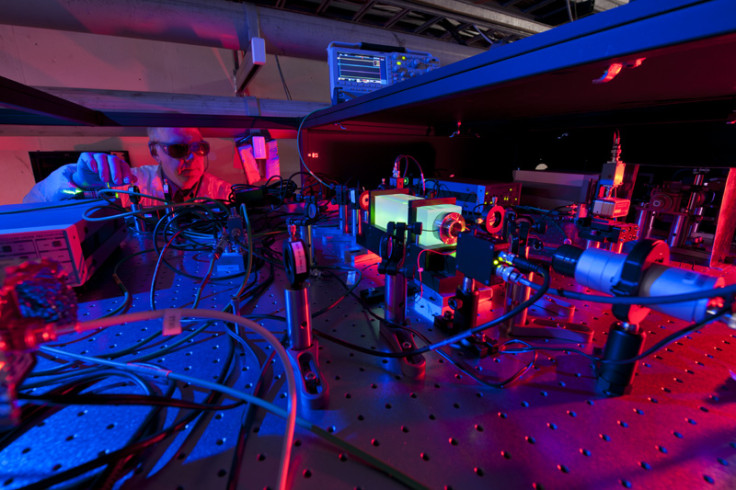Is Universe a 2D Hologram? US Government Launches Experiment to Find Out
US Department of Energy's Holometer to find out if we really live in a 2D hologram

The US government is to launch an experiment to discover if we live in a 2D hologram.
The US Department of Energy will use its Fermi National Accelerator Laboratory – or Holometer – to collect data to answer questions about the universe.
Explaining the possibility of a 2D universe, the experts noted that characters on a TV show would not know that their apparently 3D world only exists on a 2D screen.
In the same way, they said we could be living in a 2D universe with just an illusion of a 3D space.
Researchers believe that all the information in the universe could be contained into tiny 2D packages, like pixels on a TV screen but which are trillions and trillions of times smaller than an atom.
Quantum theory says that it is impossible to know the location and speed of subatomic particles. If the universe is made of 2D particles with little information on their locations, then it would fall into the same category of uncertainty.
When cooled to absolute zero, matter continues to emit quantum waves. If the theoretical 2D packages follow the same theory, then they should continue to vibrate even in matter's lowest energy state.

Craig Hogan, director of the laboratory, said: "We want to find out whether space-time is a quantum system, just like matter is. If we see something, it will completely change ideas about space we've used for thousands of years."
The team said their experiment will look at the "limits of the universe's ability to store information". The Holometer is the most sensitive device ever created to measure the "quantum jitter" of space.
It uses a pair of interferometers placed close to one another: "Each one sends a one-kilowatt laser beam (the equivalent of 200,000 laser pointers) at a beam splitter and down two perpendicular 40-meter arms," the scientists said in a statement.
"The light is then reflected back to the beam splitter where the two beams recombine, creating fluctuations in brightness if there is motion. Researchers analyse these fluctuations in the returning light to see if the beam splitter is moving in a certain way – being carried along on a jitter of space itself."
The Holometer tests frequencies so high that the motions of normal matter should not be detected.
"If we find a noise we can't get rid of, we might be detecting something fundamental about nature – a noise that is intrinsic to space-time," said project manager for the Holometer Aaron Chou. "It's an exciting moment for physics. A positive result will open a whole new avenue of questioning about how space works."
© Copyright IBTimes 2025. All rights reserved.






















